Meet a Neanderthal woman from one of Europe’s oldest cave sites
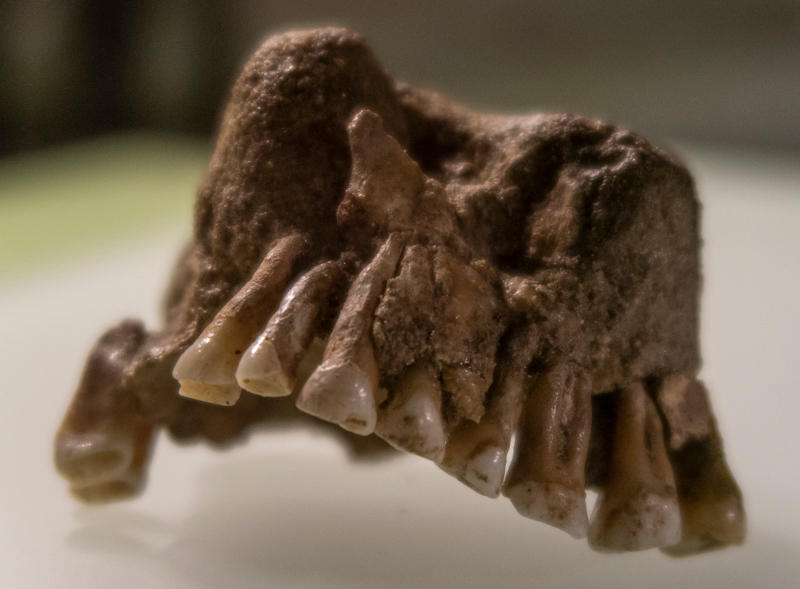
Some 70,000 years ago, a Neanderthal woman about 40 years old died in a small cave in western Switzerland. Or if she didn’t die there, her body was brought there, - maybe by family, maybe by a cave lion or wolf. We know of her because her upper jaw with teeth still intact was found in the cave.
Now you can see the exact spot where the woman was discovered. Since early June, this cave, “La Grotte de Cotencher” – just a short drive and walk from the town of Neuchâtel – has been open to the public for guided tours. The cave is the oldest archeological site in this part of Switzerland showing human habitation. The woman’s jaw was found on a little shelf of earth the size of a dinner plate.
“We call her ‘La Dame de Cotencher”, says archeologist François-Xavier Chauvière, who has been in charge of excavations at the cave since 2016.
But the discovery of La Dame is only one dramatic archeological pinpoint along the 700-century timeline of this small cave. Here, in the layers of earth and history, about 450 human-formed artifacts, mostly stone cutting tools, have been uncovered, as well as 100,000 animal bones and teeth from some 60 species, most of which are now extinct. And from more “recent” times, archeologists have found Bronze Age (2200 – 800 BCE) pottery shards and, above them, 2nd-century Roman coins.
Chauvière has himself discovered some of the cave’s prehistoric touchstones. His office is at Laténium in Neuchâtel, Switzerland’s largest archeological museum. Here, at the Cotencher exhibit, you can trade smiles with the lady herself, her jaw respectfully displayed on a different shelf, softly lit, encased in glass.
History of a prehistoric cave
On the forest trail, you could walk right past the cave with the oldest human artifacts in this part of Switzerland without noticing it. Because it can be overlooked so easily is probably why the Neuchâtel cave remained essentially unknown until 1857, though one written mention dates to 1523.
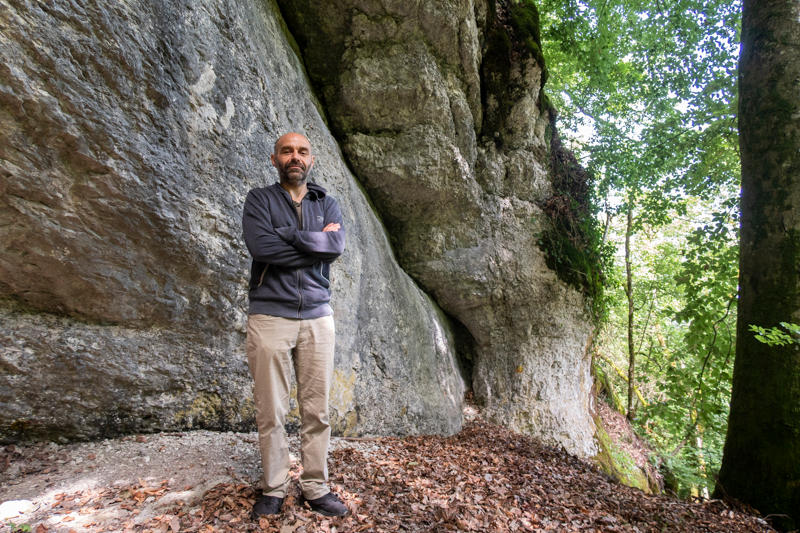
It was 19th-century railway builders who stumbled upon a small opening in the white limestone cliff. The cave would eventually be dubbed La Grotte de Cotencher (Cotencher Cave) because it was close to a steep stopping place for carts.
In 1867, the first exploratory digs brought flickering lantern light into the small cave. But it wasn’t until 1915 that the first real excavations took place.
Those explorers had to crawl in on their bellies, bumping their heads on the low ceiling. Between 1916 and 1918, they removed some 300 cubic meters of soil and rock (and animal teeth and bones).
But now you can stand up and easily move around the 1375-cubic meter cavern. Yet, this space is still smaller than what the nomad cave clans found more than 72,000 years ago. In the Pleistocene Epoch when hunter-gatherer Neanderthals sheltered here, this cave above a stream, was considerably larger than what we see today, because, since then, millennia of earth, rock, leaf litter and the sands of time have accumulated.
Several excavations since 1916 have gradually dug through layers of earth, sifting for evidence of prehistoric human and animal presence. Besides La Dame de Cotencher, teeth and bones from more than 60 species of prehistoric animals – now mostly extinct, have been found, including bears, lynxes, deer, pigs, hamsters, marmots, birds and even a rhinoceros.
That’s why archeologist Chauvière is excited about continuing excavations in the coming years. “Perhaps, just behind that wall, we will discover more remains from madame or even other human remains”, he says, during a tour.
The tour
To enter the cave, you walk up a slope that could be packed with still undiscovered prehistoric treasures just centimetres beneath your shoes, to find that the huge white limestone wall has an overhang. This terrace ceiling used to extend farther, as you can see by the fallen slabs, now covered with moss. The sunlight and the view across the steep valley show it would have been a natural gathering place for Paleolithic cave dwellers, though they looked out upon more of a grassland than the lush forest that’s there now, says Chauvière.
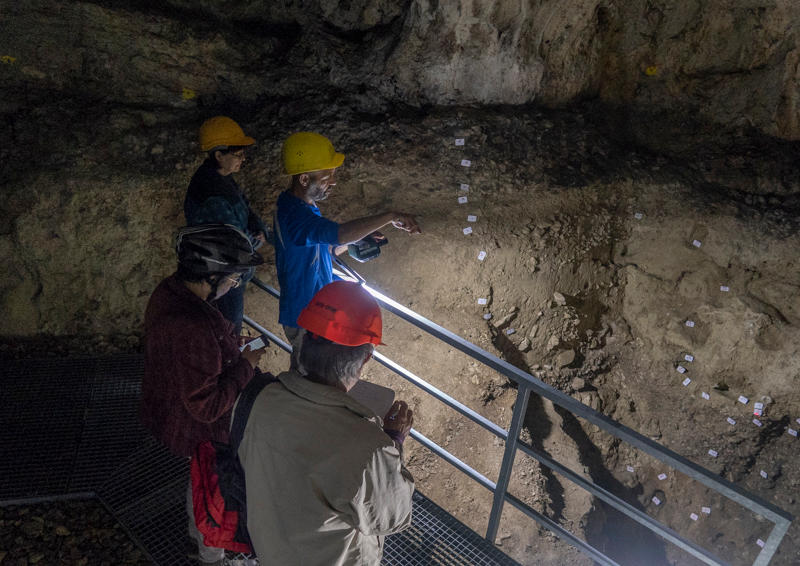
Which makes it a little shocking to turn around and find cut into the limestone wall a modern doorway blocked by an iron-rod gate. Not very welcoming. But that is precisely the idea since this is a protected archeological site of enormous historical value.
The “keys” are held by the nature association, La Maison de la NatureExternal link, which leads organized tours.
It’s quickly cooler, and lit only by two portable lights the guide brings. You see the vertical stages of excavation where archeologists have uncovered not just La Dame’s smile and other Neanderthal tools and animal remains, but also, higher in the stratified history, those Bronze Age bits of broken pottery and, still higher, Roman coins stamped with the profile of Marcus Aurelius from the 2nd century CE.
There are current residents of the cave, too. Bats live in the small crevices around the ceiling, though they’re too shy and sleepy to greet guests during the day.
While they sleep, the guide describes the history of the cave and its excavations, and upon request, you can ask to have the lights turned off. There you are, standing silently in the dark, imagining what once was.
Chauvière still likes to do this himself. “I imagine a small group of five or six Neanderthals settling under the porch of the cave,” says the archeologist. “One is lighting a small fire and two others are cutting flint. The others rest. We hear the songs of birds”.
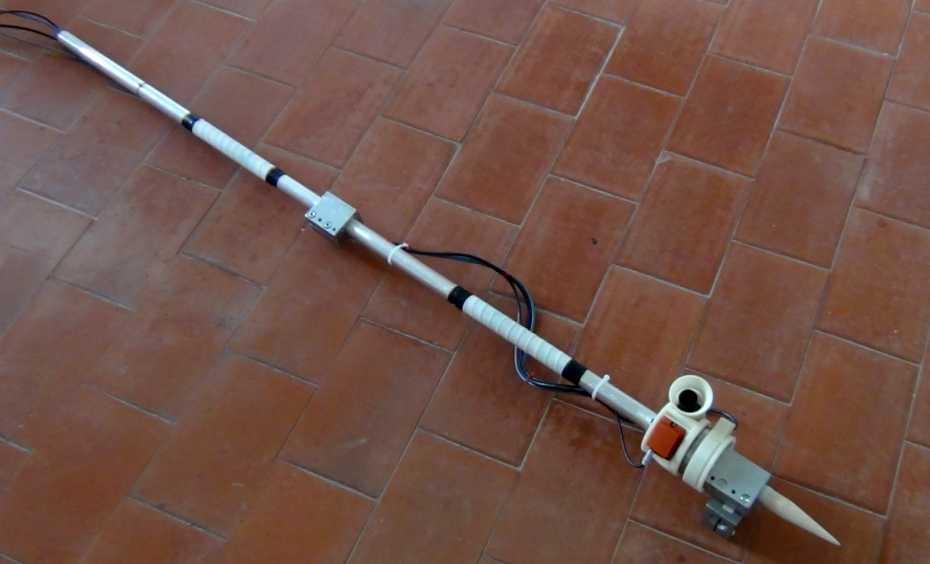
More
High-tech spear sheds light on Neanderthals’ hunting techniques
Switzerland’s oldest known open-air site with archeological evidence is in Pratteln (Basel), where one artifact dating back 400,000 years was found. The oldest archaeological site in Europe is in Dmanisi (Georgia), with artifacts 1.8 million years old.
Access to the cave’s exterior is free along a public hiking trail only 800 meters from the railway station in the village of Chambrelien. Guided tours are offered by the ‘Maison de la Nature Neuchâteloise’External link

In compliance with the JTI standards
More: SWI swissinfo.ch certified by the Journalism Trust Initiative

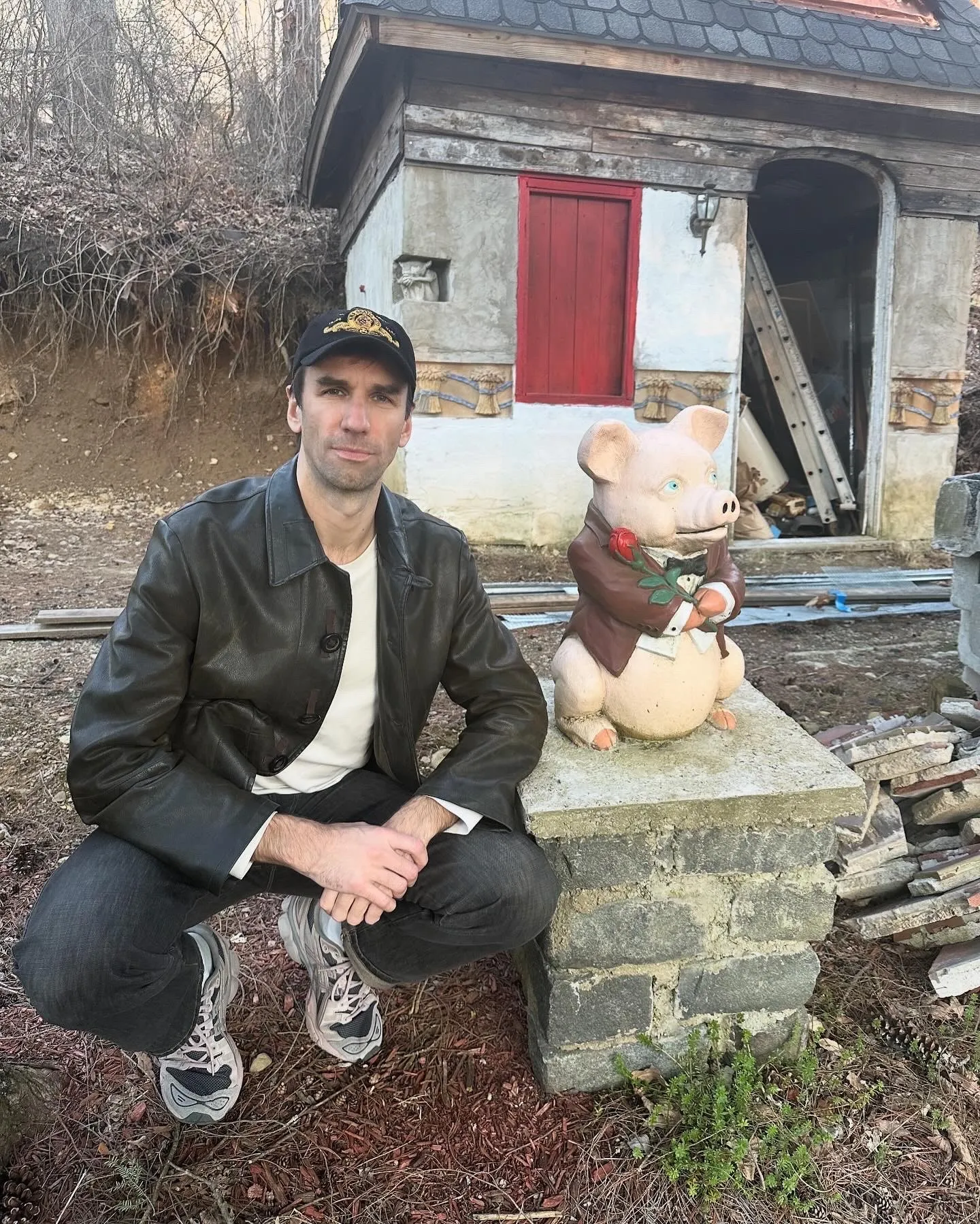
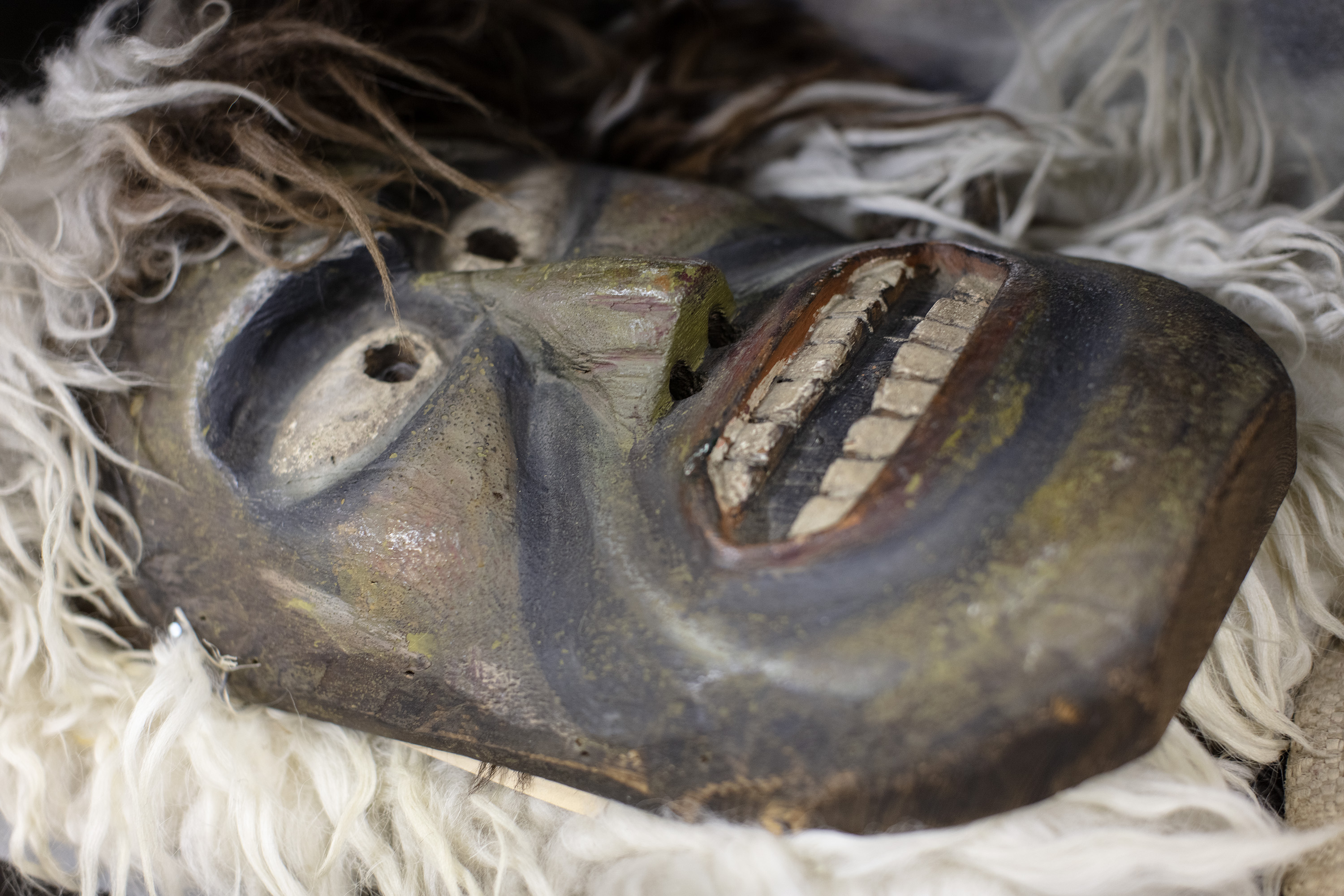
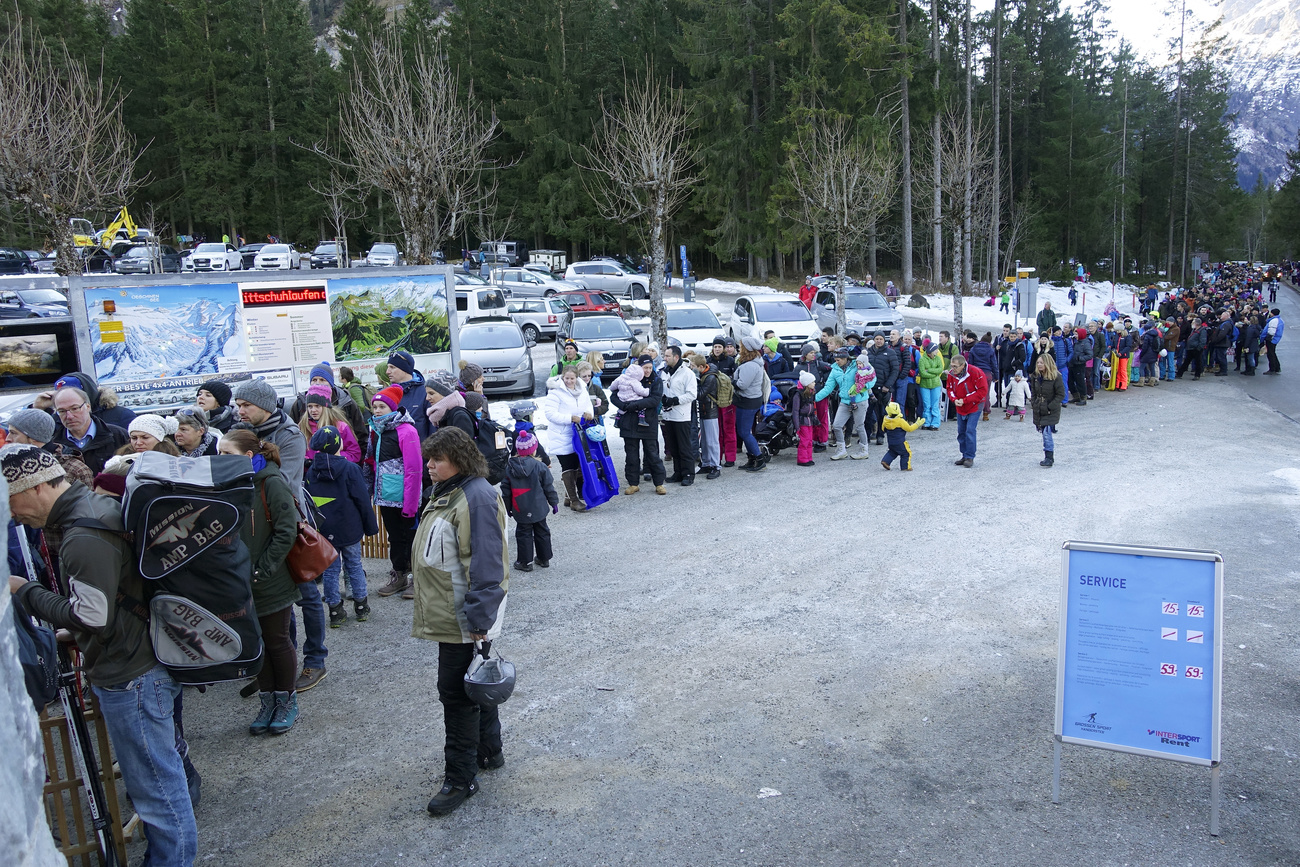





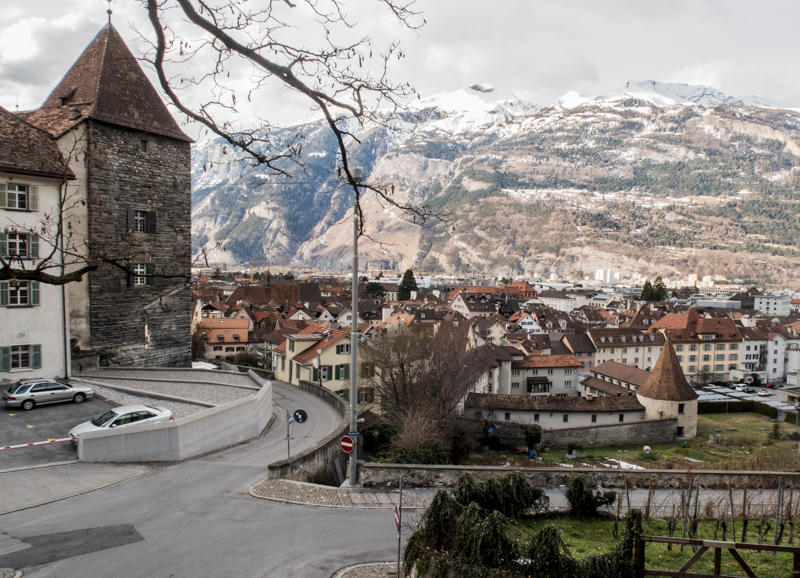

You can find an overview of ongoing debates with our journalists here . Please join us!
If you want to start a conversation about a topic raised in this article or want to report factual errors, email us at english@swissinfo.ch.